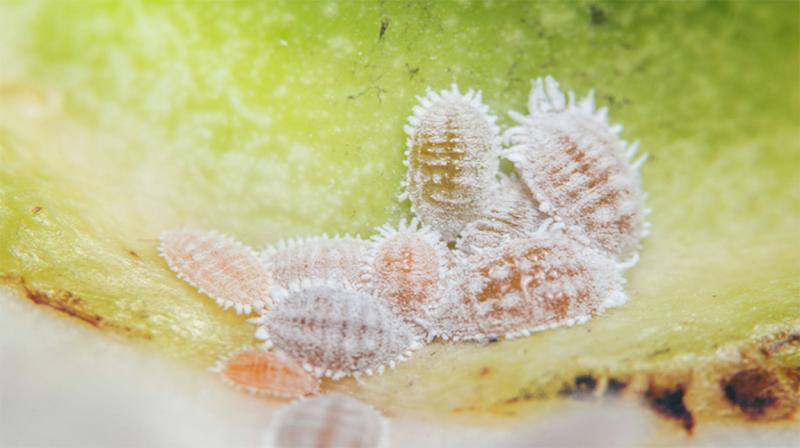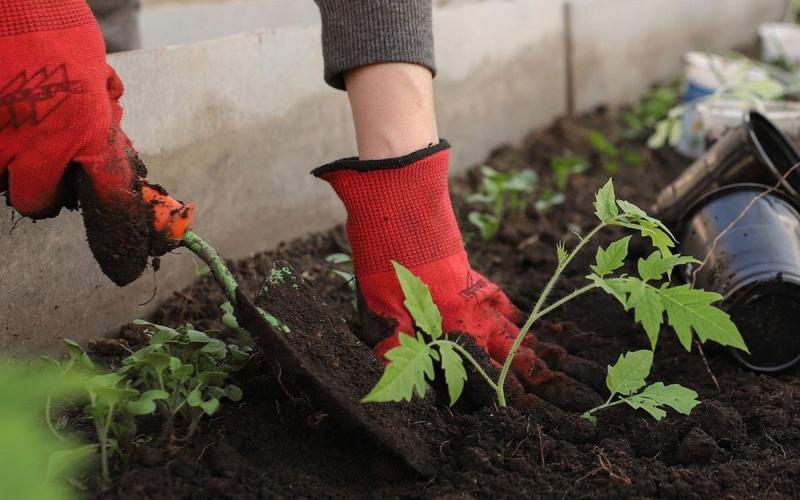Written by Cindy Schnabel under the direction and review of Kristine Lang and Sydney Trio.
People with green thumbs love to bring the outside in by growing plants indoors. Houseplants can improve the aesthetic of indoor spaces large or small by adding interesting color and textures to your decor. Indoor plants provide health benefits by improving indoor air quality and reducing stress. In the Midwest, houseplants can bring a welcome flush of green during the cold winter months!
Unfortunately, many houseplant lovers have experienced a “sick” houseplant. Trying to figure out the problem can feel daunting, but by exploring some common issues you’ll be able to solve many houseplant problems. Many popular houseplants are native to tropical environments. This means that the environment that the plant normally grows in is very different to that within your home, especially during our winter months. Understanding the essential requirements of a particular plant will go a long way to keep it thriving.
Water

Watering is something that people need to do because there is no “rain” indoors. The amount of watering and how often you do it plays a big part in the life of the plant.
- Too Little: If you’ve been away for a long period of time, or forgotten about a plant in an underused room, you may see signs of too little water, such as:
- Wilting (drooping or dropping of leaves).
- The soil being dry to the touch.
- Tips and edges that look burnt, dry, and brown.
- The pot is light when you pick it up.
- Too Much: Too much water is the main reason most houseplants die. Signs of too much water include:
- New and old leaves fall of at the same time.
- Leaves, stems, and flowers are moldy.
- Foul odor.
Light

For photosynthesis to occur, plants need light. Without this, the plant cannot make complex sugars for its growth. There is not a one-size-fits-all recommendation for light requirements. You need to consult or know the correct amount of light each plant needs. Light recommendations are referred to as low, medium, or high.
- Too Little: Signs that a plant is getting too little light include:
- Small leaves.
- Slow or no new growth.
- Yellowing leaves.
- Leaning or moving closer to the light source.
- Leggy appearance.
- Too Much: Signs of too much light for a specific plant:
- Brown or brittle leaves.
- Pale, bleached, or faded areas on the leaves.
- Leaf scorch.
Fertilizer

House plants are living in the potting soil that was selected by the store or by you (if you potted it yourself). These potting mixes may have very little, if any fertilizer, in them. This means you need to give the plant the same kinds of balanced fertilizer that contains key minerals including nitrogen (N), phosphorous (P) and potassium (K). In many cases, a basic 10-10-10 (which corresponds to N-P-K) fertilizer will do the trick; this may be granular or water-soluble, and you should follow the application instructions on the product label to ensure proper use.
- Needs Fertilizer: Plants may need fertilizer when:
- When leaves begin to turn light green (needs nitrogen).
- Mature foliage turns yellow (needs nitrogen).
- Leaves are light green with dark green veins (needs potassium).
- Older leaves turn purplish at the base and others are dull, dark-green (needs phosphorous).
- Too Much Fertilizer: Signs that a plant has received too much fertilizer include:
- Excessive salt build-up on soil, which may look like a white, crusty layer.
- Browning leaf tips and margins.
- Lack of flowering.
Insects

Houseplants can get insect damage if new plants are brought into your home, if windows are left open, or if you bring plants indoors after the summer season. Some mites and insect pests may be difficult to spot, so you must pay attention and inspect your plants regularly.
- Mealybugs look like small, cottony masses on the joints or underside of leaves. You may notice very tiny pin-prick spots on the leaves, and as damage progresses, leaves will start to look brown, dry, and drop off.
- Aphids are tiny green, brown, or black insects that are normally found on the underside of leaves. They will stunt the plant’s growth and curl or distort the foliage.
- Mites are tiny, light-colored arachnids (not insects). You will notice webbing on the foliage and stems of the plant. The plant will begin to have yellowish foliage.
- Scales are tiny, oval, brown insects covered by a hard waxy shell. They are usually on the stems and leaves. They feed on the plant juices and stunt the growth.
- Whiteflies, as the name implies, are small, white, gnat-like insects. The adult and young will feed on the leaves, turning them pale yellow or white.
Diseases

Most house plants will have few diseases if they are grown under proper conditions. There are a few that may pop up when plants are stressed and in a weakened condition.
- Anthracnose is a fungal disease that will turn the tips of the plant yellow and brown. The best way to manage this is to remove the infected leaves and avoid misting the plant.
- Leaf spot can be fungal or bacterial. Fungal leaf spot will have spots that appear brown with yellow halos. If you use a magnifying glass, you can see the tiny, black dots on the brown tissue. Parts or all of the leaf may die. Bacterial leaf spot is where the spots appear water-soaked and may also have a yellow halo. Remove the infected leaves and increase the air circulation. Avoid getting water on the leaves.
- Powdery mildew looks like a white, powdery fungal growth on the foliage. This may cause leaf distortion, resulting in it completely dropping off. Removing the infected leaves, increasing the air circulation, and avoiding overwatering will help this problem.
- Root rot infected plants will start to wilt, even though the soil is moist. The leaves may start yellowing. To determine if it is root rot, inspect the roots by gently tipping or lifting the plant from its container. Healthy roots will be sturdy and pliable. Rotting roots will look mushy, brown, fragile, and may even smell. If there are enough healthy roots, rinse them off and repot the plant in a clean container with a drainage hole and new, sterile soil. Do not forget to reduce watering! Some plants may not be salvageable, so you will unfortunately have to discard those.
Figuring out what is wrong with a house plant can be overwhelming. The signs might be easy to see, or you may have to do a little digging to figure it out. It can be one or more of the above issues. If you need additional support diagnosing a houseplant issue, the SDSU Extension Garden Hotline staff would be happy to assist you!
References and Resources
- Diagnosing Houseplant Problems, Iowa State University Extension.
- Preventing, Diagnosing, and Correcting Common Houseplant Problems, PennState Extension.
- Problems Common to Many Indoor Plants, Missouri Botanical Garden.
- NICH Releases PlantsDoThat Inside, a New Series of Four Infographics, National Initiative for Consumer Horticulture.


